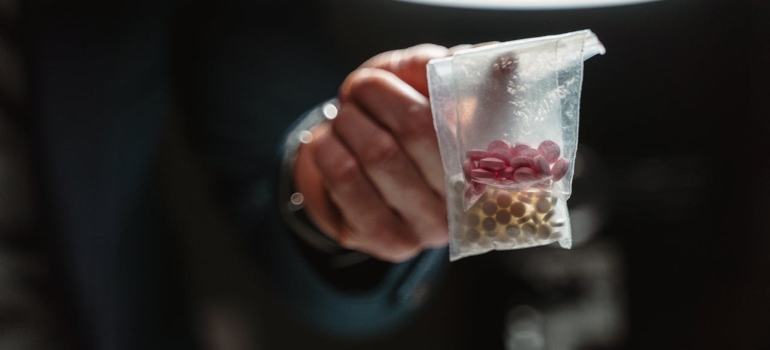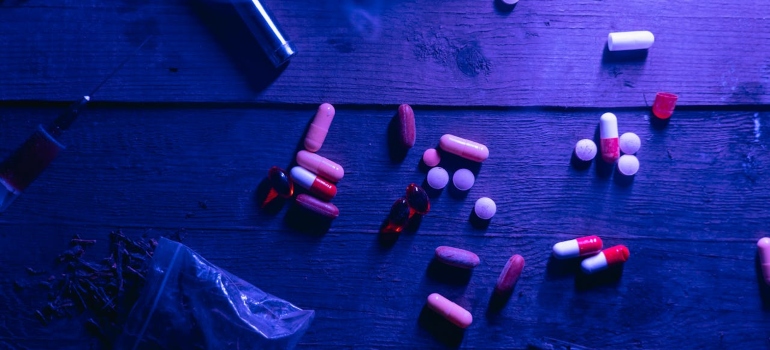The Designer Drug Problem in Pennsylvania
The designer drug problem in Pennsylvania is a growing concern, impacting both urban and rural areas. Designer drugs, often referred to as synthetic or new psychoactive substances, are created to mimic the effects of illegal drugs while avoiding legal restrictions. These substances can be extremely dangerous due to their unpredictable potency and composition. In recent years, Pennsylvania has seen a rise in the use of synthetic opioids like fentanyl, which has been linked to numerous overdose deaths. Understanding the scope of the designer drug problem in Pennsylvania is important for implementing effective prevention and treatment strategies. By addressing this issue, we can help reduce the harm caused by these dangerous substances and support affected communities across the state.
Jump to Section
What are Designer Drugs?
Designer drugs are synthetic substances engineered to mimic the effects of traditional illicit drugs. These drugs are chemically altered versions of existing drugs, designed to evade drug laws. Common types of designer drugs include synthetic cannabinoids like Spice/K2, synthetic cathinones known as bath salts, and synthetic opioids such as fentanyl. Each type of designer drug can have unpredictable and often dangerous effects on users. Designer drugs are particularly dangerous due to their unpredictable potency and composition. They often produce these substances in unregulated labs, leading to variations in strength and a higher risk of overdose.

In Pennsylvania, the designer drug problem is escalating, with law enforcement agencies reporting increasing cases of overdoses and illegal distribution networks. The lack of consistent regulation makes it difficult to control the spread and use of these substances. Research indicates that the use of designer drugs is more prevalent among young adults. Particularly, those are men in their mid-to late-20s, while the prevalence also extends to teenagers and individuals over 40. There is a mistaken belief that these drugs are safer alternatives to traditional illicit drugs.
The Designer Drug Problem in Pennsylvania and How It Compares to Other States
Designer drugs, often synthesized to mimic the effects of controlled substances while avoiding legal restrictions, are becoming increasingly prevalent. In Pennsylvania, opioid overdoses, particularly involving synthetic opioids like fentanyl, have significantly impacted both urban and rural communities. In 2021, Pennsylvania had an estimated 5,168 drug overdose deaths, with a substantial number attributed to designer drugs. The availability of these chemicals, which are often marketed online and in black markets, contributes to this problem.
Comparing Pennsylvania to other states highlights the severity of the problem. Pennsylvania has the third highest drug overdose death rate in the country, following Ohio and West Virginia, with 35 deaths per 100,000 residents, compared to the national average of 21 deaths per 100,000. This difference underscores the need for targeted interventions and comprehensive drug policies to address the designer drug crisis. States with similar issues, like Ohio and West Virginia, also face high overdose rates due to the widespread availability of synthetic opioids and other designer drugs, reflecting a broader national crisis.

History and Emergence of Designer Drugs
The emergence of designer drugs dates back to the 1980s when underground chemists began synthesizing substances like MDMA to bypass drug laws. This period marked a significant shift in drug culture, driven by the rave scene and the demand for new psychoactive substances. The late 1990s and early 2000s saw an explosion in the availability of designer drugs, largely due to the internet, which facilitated easier distribution. These drugs are created by altering the chemical structures of known substances to produce new, often more potent, variations that skirt legal restrictions. This rapid evolution has made it challenging for authorities to regulate these substances effectively. Understanding the history and development of designer drugs is crucial for addressing their impact on public health and safety.
Types of Designer Drugs
Designer drugs have various forms and significant health impacts. Understanding these types and their effects is very important for awareness and prevention:
- Synthetic Cannabinoids
- Synthetic Cathinones (Bath Salts)
- Novel Psychoactive Substances (NPS)
Synthetic Cannabinoids
Synthetic cannabinoids, often sold under names like Spice and K2, are lab-made chemicals that mimic the effects of THC, the active ingredient in cannabis. These substances bind to the same brain receptors as THC but often with much greater potency. This increased potency can lead to severe side effects, including vomiting, chest pain, increased heart rate, hallucinations, and even kidney damage. Users might experience a mix of euphoria and relaxation, similar to cannabis, but the risks are significantly higher due to the unpredictable nature of these synthetic compounds. Regular use of synthetic cannabinoids can lead to serious health issues, including psychotic episodes and long-term mental health problems.

Synthetic Cathinones (Bath Salts)
Synthetic cathinones, commonly known as “bath salts,” are a class of synthetic stimulants designed to mimic the effects of substances like cocaine, methamphetamine, and MDMA. These substances are often found in powder form and sold in small packages labeled “not for human consumption.” Bath salts can be ingested, snorted, or injected, leading to intense psychological and physical effects. Users may experience increased heart rate, agitation, hallucinations, and violent behavior. The effects can last up to four to eight hours, but the comedown period may extend to two days, causing prolonged physical and mental distress. Long-term use of synthetic cathinones can result in severe health problems such as rhabdomyolysis, which can lead to kidney failure, and extreme addiction potential with intense cravings.
Novel Psychoactive Substances (NPS)
Novel Psychoactive Substances (NPS) are a broad category of designer drugs that include a wide range of chemicals designed to mimic the effects of traditional illicit drugs. These substances can include synthetic opioids, hallucinogens, and stimulants. NPS are often marketed as legal alternatives to controlled substances, but their safety and efficacy are largely unknown. The effects of NPS can be unpredictable, leading to severe health risks such as acute toxicity, dependency, and mental health disorders. The rapid development and distribution of NPS make it challenging for regulatory bodies to keep up, posing ongoing public health concerns.
Club drugs
Club drugs are substances often used in social settings like clubs, raves, and parties to enhance mood and sensory perception. These drugs can have unpredictable and dangerous effects, especially when mixed with other substances. Commonly misused club drugs include MDMA (Ecstasy), GHB, ketamine, and methamphetamine, each producing unique effects but sharing the risk of severe health consequences.
Types of club drugs and their effects:
- MDMA (Ecstasy): Causes euphoria, increased energy, emotional warmth, and distortions in time and perception. It can lead to dehydration, hyperthermia, and heart or kidney failure.
- GHB (Gamma-Hydroxybutyric Acid): Known for its sedative effects, GHB can induce euphoria, drowsiness, and unconsciousness. It is also notorious as a “date rape” drug.
- Ketamine: Acts as a dissociative anesthetic, causing hallucinations and a dream-like state. It can impair motor functions and cause memory loss.
- Methamphetamine: Highly addictive stimulant that affects the central nervous system, leading to increased energy, euphoria, and dangerous health effects. One variant pink meth is marketed to appeal to younger users but remains just as harmful.

The use of these substances carries significant risks. For example, meth can kill you due to its extreme stimulant effects leading to heart failure or stroke. Mixing club drugs with alcohol or other substances significantly increases the likelihood of overdose or serious injury. It’s crucial to educate yourself about these drugs to make informed decisions and avoid severe health and legal consequences. If you or someone you know is struggling with club drug use, seeking help from professionals is essential.
Overdose and Fatalities
Designer drugs pose a significant risk of overdose and fatalities due to their unpredictable potency and composition. These substances, including synthetic cannabinoids and synthetic cathinones, are often much more potent than the traditional ones. For instance, synthetic cannabinoids can be up to 100 times stronger than natural marijuana, leading to severe reactions and overdoses. The U.S. has seen a troubling increase in overdose deaths linked to designer drugs, with many cases involving new, potent substances that users might not recognize. In 2020, designer opioids like isotonitazene were linked to numerous overdose deaths in states such as Ohio, Illinois, and Indiana.
The emergence of new synthetic drugs continually challenges law enforcement and healthcare providers. Synthetic drugs often escape detection in standard drug tests, complicating diagnosis and treatment in overdose cases. Furthermore, the rapid development of new analogs, designed to bypass legal restrictions, means that users are often unaware of the substances they consume. This unpredictability significantly increases the risk of overdose and death. The Centers for Disease Control and Prevention (CDC) reports that overdose deaths involving synthetic opioids, including designer drugs, have risen dramatically over the past decade, contributing to the overall increase in drug-related fatalities in the United States.

Mental Health Concerns
Designer drugs pose significant mental health risks due to their unpredictable effects and unknown ingredients. These substances can lead to severe psychiatric symptoms, including paranoia, anxiety, and hallucinations. Users often experience impaired cognitive function, resulting in dangerous behavior and poor decision-making.
Synthetic cannabinoids (e.g., K2, Spice) have been linked to increased emergency room visits due to severe agitation and psychosis. Long-term use of designer drugs can exacerbate existing mental health conditions or trigger new ones, leading to persistent mood disorders such as depression and anxiety. Substances like synthetic cathinones (e.g., bath salts) can cause prolonged psychotic episodes, sometimes indistinguishable from schizophrenia.
In addition to psychiatric symptoms, designer drugs can impact overall brain health. Neurotoxic effects from these substances can lead to memory problems, cognitive deficits, and emotional instability. Prolonged use of novel psychoactive substances (NPS) can disrupt neurotransmitter systems, causing lasting changes in mood and behavior.
Effective treatment requires a multifaceted approach, combining detoxification, medication assisted treatment in Pennsylvania, and behavioral therapies to manage both addiction and its mental health consequences. Awareness and education about the risks of designer drugs are crucial for preventing use and promoting mental well-being.
Treatment and Rehabilitation
Overcoming addiction to designer drugs requires a comprehensive approach, addressing both physical and psychological aspects of dependence. Treatment typically begins with medical detoxification, where professionals help manage withdrawal symptoms and safely eliminate the drugs from the body. Following detox, behavioral therapies such as CBT treatment plan for substance abuse and Dialectical Behavior Therapy (DBT) are employed to address the underlying issues contributing to addiction. These therapies help people develop coping strategies and change harmful thought patterns. Support groups and individual counseling provide additional emotional support and encourage long-term recovery. Integrating various treatment modalities significantly improves the chances of successful recovery.

An important component of successful treatment is aftercare. Aftercare planning involves ongoing support to help individuals maintain sobriety and prevent relapse. This can include regular therapy sessions, participation in support groups, and monitoring by healthcare professionals. Programs may also incorporate holistic approaches such as mindfulness, yoga, and exercise to promote overall well-being. Treatment should be tailored to each individual’s needs, considering their specific substance use patterns and any co-occurring mental health conditions. By offering a comprehensive, personalized approach, residential treatment centers in Pennsylvania can effectively support individuals on their path to recovery.
Confronting the Designer Drug Problem in Pennsylvania
The designer drug problem in Pennsylvania poses a significant threat to public health and safety. These synthetic substances, with their unpredictable effects and high potential for addiction, have led to a rise in overdose cases and mental health crises. Addressing this issue requires comprehensive strategies that include public awareness, strong healthcare interventions, and effective law enforcement. Seeking professional from a Pennsylvania rehab center is necessary for those affected. By understanding and tackling the root causes of the designer drug problem in Pennsylvania, we can work towards creating a safer and healthier community.
References:
Designer Drugs 2015: Assessment and Management. (s. d.). https://www.ncbi.nlm.nih.gov/pmc/articles/PMC4422150/
Drug overdoses in rural and urban Pennsylvania: a progress report. (s. d.). Center For Rural Pennsylvania
Pennsylvania Opioids. (s. d.). PA Open Data Portal. https://data.pa.gov/stories/s/Pennsylvania-Opioids/9q45-nckt/
Drug Overdose Mortality by State. (s. d.). https://www.cdc.gov/nchs/pressroom/sosmap/drug_poisoning_mortality/drug_poisoning.htm
Fighting the Uphill War Against Illicit Drugs and Overdose Deaths: Detecting Emerging Designer Drugs and Opioid Analogs | National Institute of Justice. (s. d.). National Institute Of Justice. https://nij.ojp.gov/topics/articles/fighting-uphill-war-against-illicit-drugs-and-overdose-deaths-detecting-emerging